Invented by Jianjun Cheng, Mark E. Davis, Kay T. Khin, Novartis AG
Cyclodextrins are cyclic oligosaccharides composed of glucose units, which are produced through the enzymatic degradation of starch. These molecules have a unique structure that allows them to form inclusion complexes with a wide range of guest molecules. This property makes cyclodextrins ideal for encapsulating and stabilizing various compounds, enhancing their solubility, bioavailability, and controlled release.
In the pharmaceutical industry, cyclodextrin-based polymers have gained significant attention for their ability to improve the solubility and stability of poorly water-soluble drugs. By encapsulating these drugs within cyclodextrin-based polymers, their bioavailability can be enhanced, leading to improved therapeutic outcomes. Additionally, cyclodextrin-based polymers can be used to modify drug release profiles, allowing for sustained or targeted drug delivery.
The food and beverage industry has also recognized the potential of cyclodextrin-based polymers. These polymers can be used as encapsulating agents to protect sensitive ingredients, such as flavors, vitamins, and antioxidants, from degradation during processing and storage. By encapsulating these ingredients, their shelf life can be extended, and their release can be controlled, ensuring optimal flavor and nutritional value in food and beverage products.
In the cosmetics industry, cyclodextrin-based polymers are used for their ability to enhance the stability and solubility of active ingredients in skincare and haircare products. These polymers can encapsulate and deliver ingredients such as vitamins, antioxidants, and essential oils, improving their efficacy and ensuring their targeted delivery to the skin or hair.
Furthermore, cyclodextrin-based polymers have found applications in the agricultural sector. These polymers can be used to encapsulate and deliver agrochemicals, such as pesticides and fertilizers, improving their efficiency and reducing their environmental impact. By encapsulating these chemicals, their release can be controlled, minimizing their leaching into the soil and water systems.
The market for cyclodextrin-based polymers is expected to continue growing in the coming years, driven by the increasing demand for improved drug delivery systems, functional food and beverage products, and sustainable agricultural solutions. The versatility of cyclodextrin-based polymers, coupled with their unique properties, makes them highly attractive for a wide range of applications across multiple industries.
However, challenges such as high production costs and regulatory constraints may hinder the widespread adoption of cyclodextrin-based polymers. Efforts are being made to develop cost-effective production methods and address regulatory concerns to further expand the market for these innovative polymers.
In conclusion, the market for cyclodextrin-based polymers is witnessing significant growth, driven by their exceptional properties and diverse applications. As industries continue to seek innovative solutions for drug delivery, functional food and beverages, cosmetics, and agriculture, cyclodextrin-based polymers are poised to play a crucial role in meeting these demands. With ongoing research and development efforts, the market for cyclodextrin-based polymers is expected to thrive in the years to come.
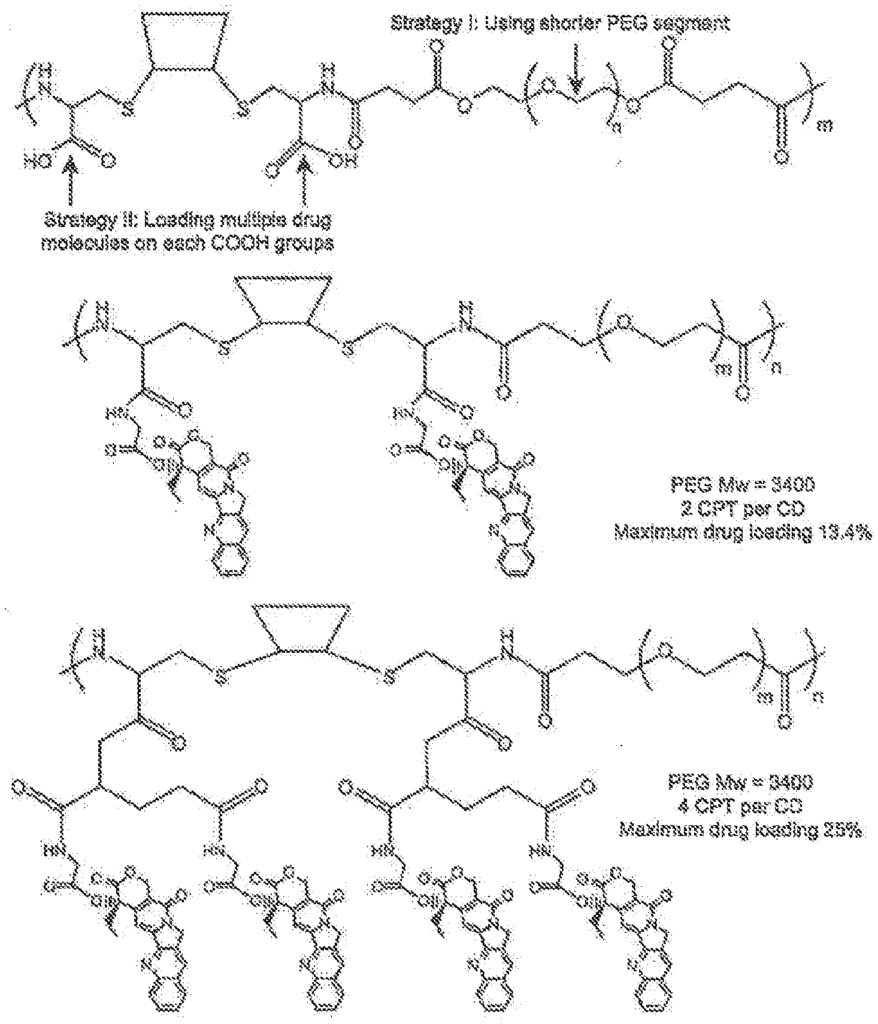
The Novartis AG invention works as follows
The present invention is directed to compositions of polymeric compounds containing therapeutic cyclodextrin that are designed as carriers for the delivery of small molecules therapeutics and compositions derived therefrom. These cyclodextrin-containing polymers improve drug stability and solubility, and reduce toxicity of the small molecule therapeutic when used in vivo. The polymers also present methods of controlled delivery of therapeutic agents by choosing from a variety linker groups and ligands. The invention also relates methods for treating subjects using the therapeutic compositions disclosed herein. The invention also relates to pharmaceutical business methods that include manufacturing, licensing or distributing kits containing the polymeric compounds described in this document.
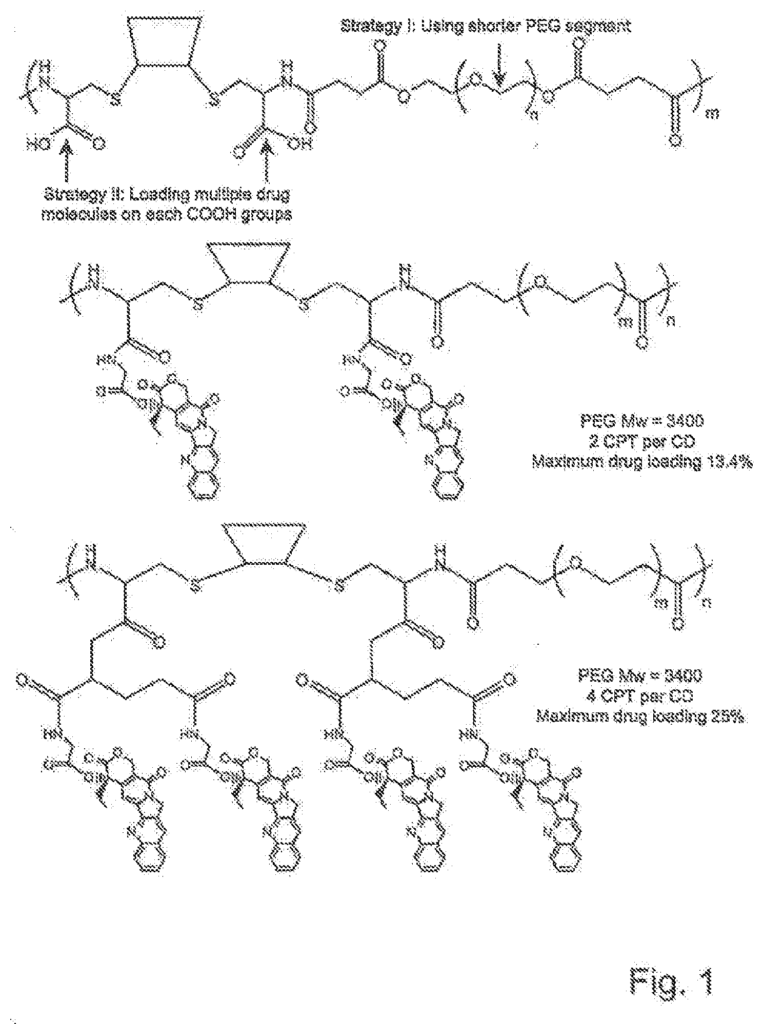
Background for Cyclodextrin based polymers
I. Overview
II. Definitions
(a.) General Terms
(b.) Chemical Terms
III. “III.
(a) Exemplary compositions
(b) Targeting Ligand
(c), Pharmaceutical Compositions and Formulations
(c) The Physical Structures of the Compositions Under Study
(d) Release and Biodegradability Characteristics”.
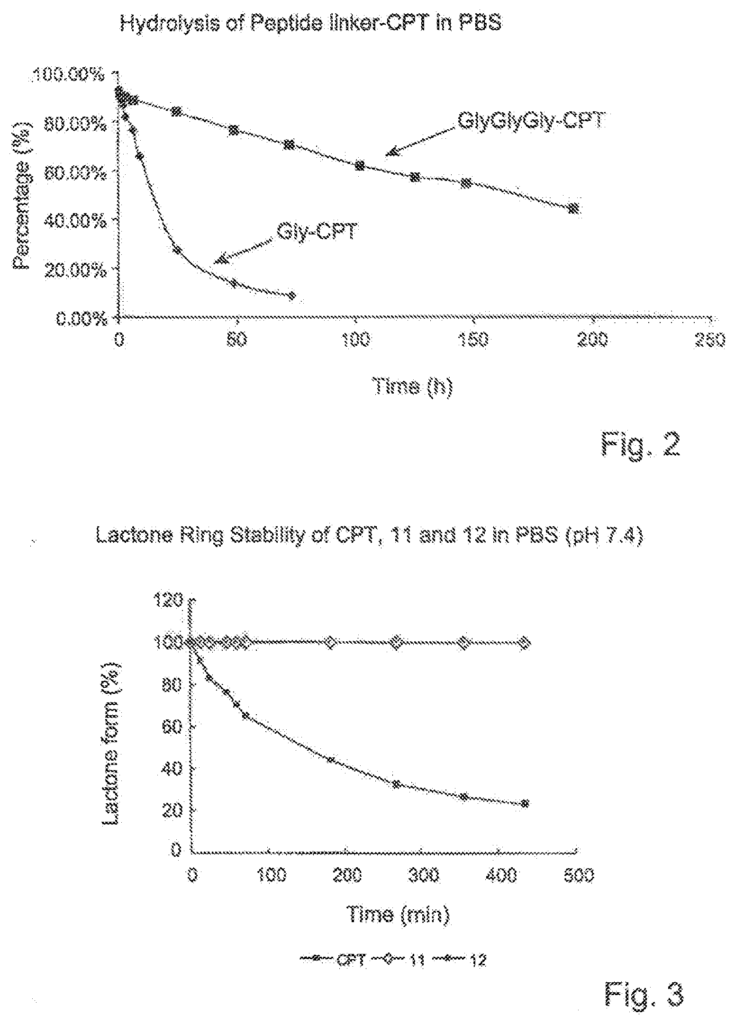
(e) Implants and Delivery Systems
(f Methods of Manufacturing”)
(g) Business methods
EXEMPLIFICATION
Materials.
Example 1: Biphenyl-4,4-disulfonyl-A,D-Capped ?-Cyclodextrin, 1 (Tabushi et al. J. Am. Chem. Soc. 106, 5267-5270 (1984))
Example 2: 6A,6D-Diiodo-6A,6D-Dideoxy-?-cyclodextrin, 2 (Tabushi et al. J. Am. Chem. 106, 4580-4584 (1984))
Example 3: 6A,6D-Bis-(2-aminoethylthio)-6A?6D-dideoxy-?-cyclodextrin, 3 (Tabushi, I: Shimokawa, K; Fugita, K. Tetrahedron Lett. 1977, 1527-1530)
Alternative Synthesis of Dicysteamine?-CD 3
Example 4: 6A,6D-Bis-(2-amino-2-carboxylethylthio)-6A?6D-dideoxy-?-cyclodextrin, 4 (CD-BisCys)
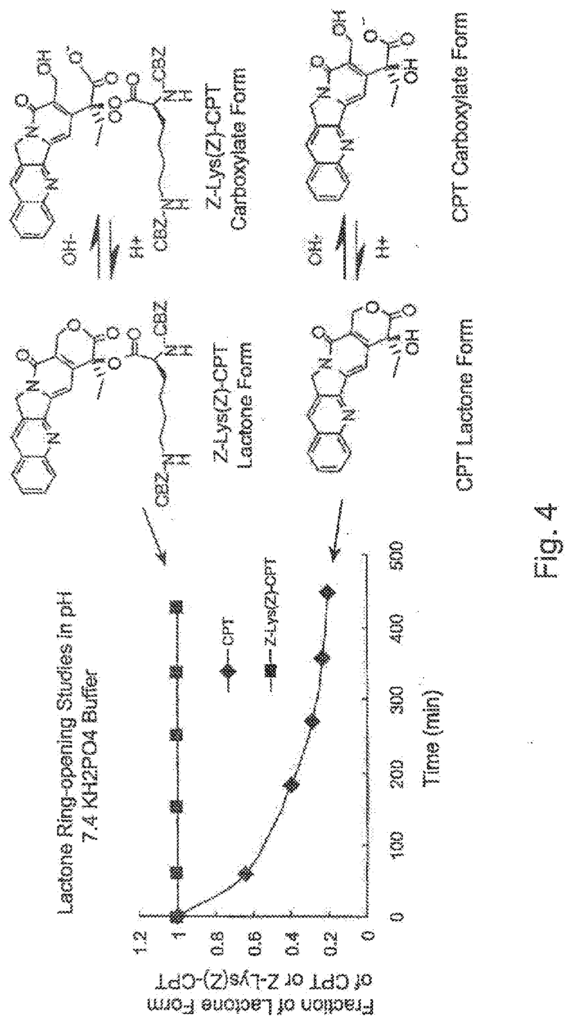
Example 5: 6A,6D-Bis-(carboxylmethylthio)-6A?6D-dideoxy-?-cyclodextrin, 5 (CDDM)
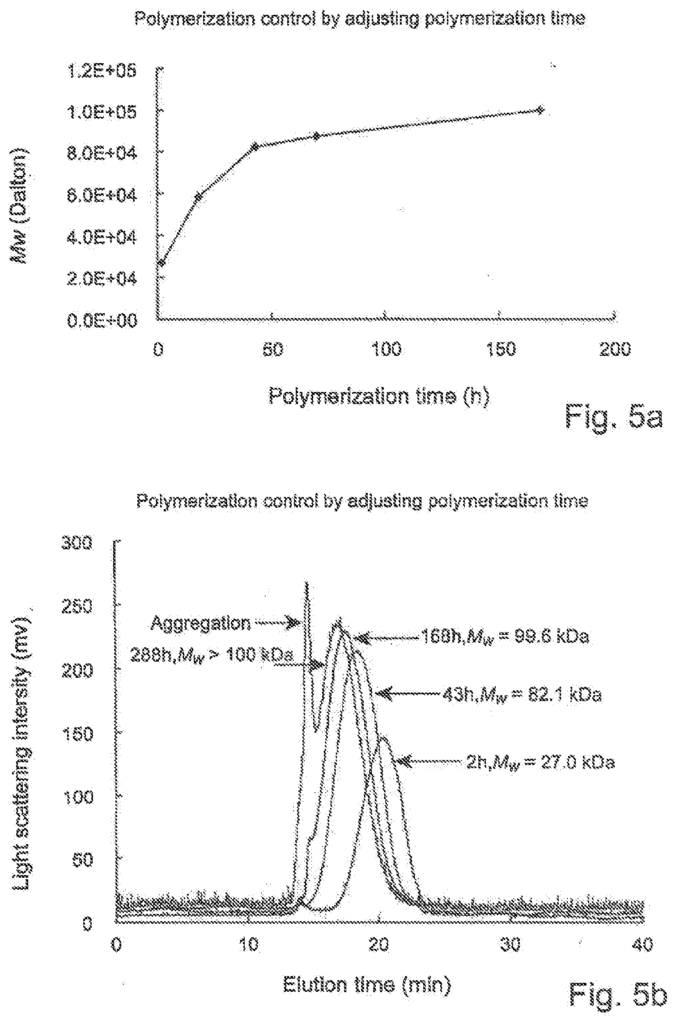
Click here to view the patent on Google Patents.
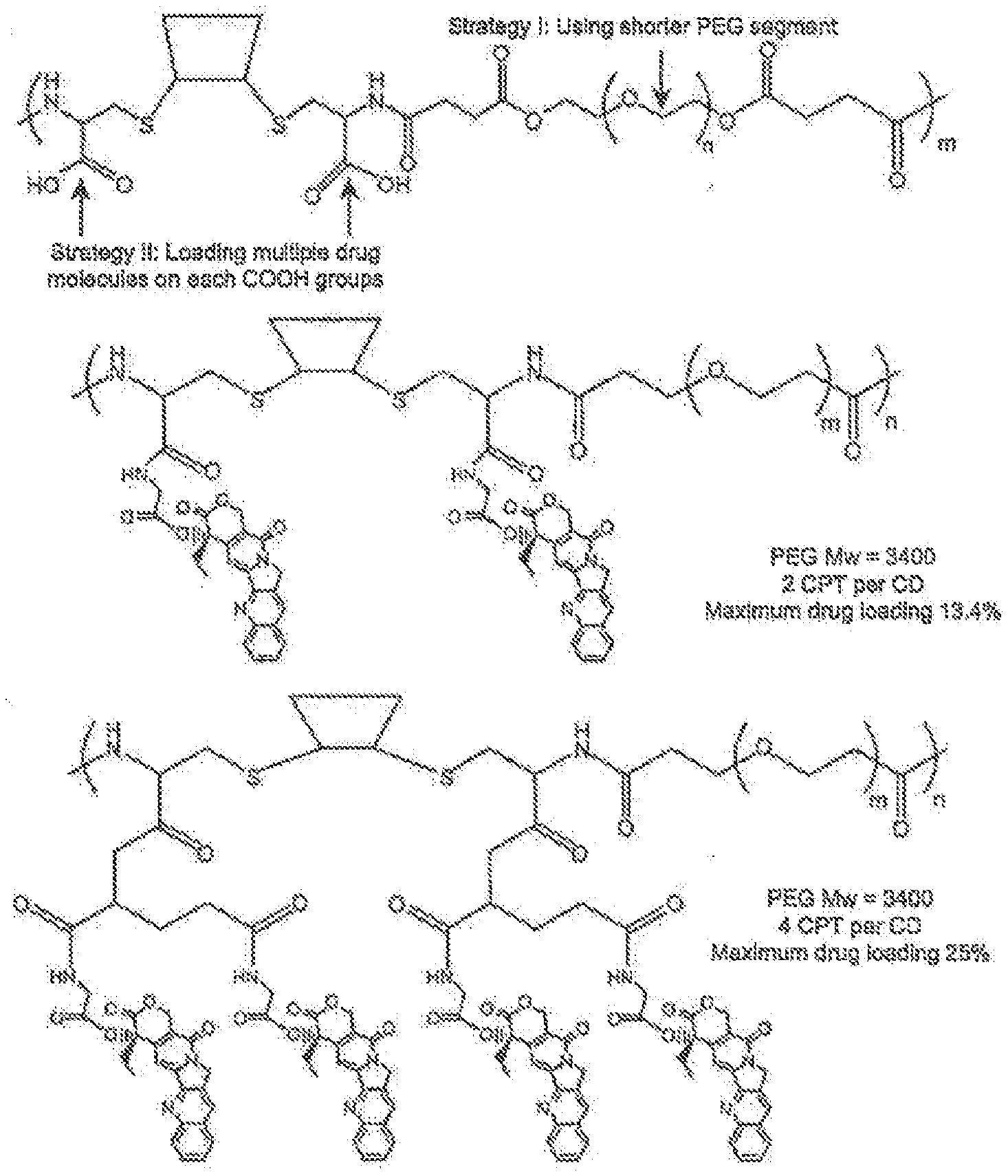
Leave a Reply